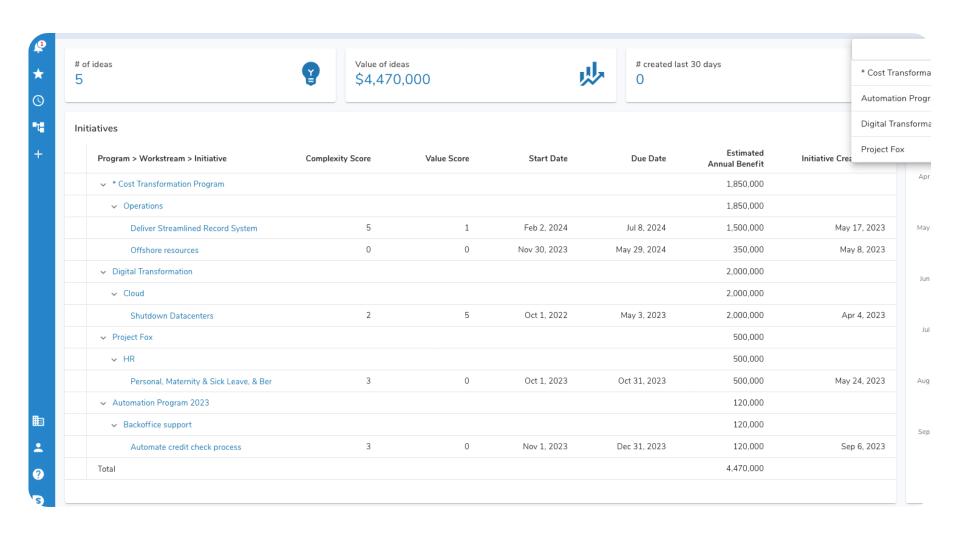Innovation is the lifeblood of many organizations; in fact, 94% of chief executive officers (CEOs) view it as a top-three business priority. The emphasis makes sense when you consider the research finding that companies that prioritize innovation grow at a 16% higher rate than those that do not.
Even though innovation is a top priority for many executives, continuously developing and launching innovative solutions can feel like a tall order. After all, everyone in your organization is already busy with their day jobs. Plus, the pace of technology advancements (e.g. AI, cloud computing, Internet of Things, AR) is accelerating. It’s tough for anyone to have enough time to continuously keep up with technology and apply that knowledge for the benefit of their employer. So how do you get innovation to happen more frequently in your organization?
Hosting innovation challenges is one good solution.
Innovation challenges leverage a structured framework and defined scope to collect multiple ideas for solving pressing business problems in creative, effective ways. The time frame, audience, and topics may vary, but the challenge should align with the organization’s strategic objectives for the best results. Let’s examine the benefits of these challenges, how to host one, where Artificial Intelligence (AI) fits in, and tips for generating the greatest results from your efforts.
The Benefits of Innovation Challenges
There are two main categories of innovation challenges:
- Open innovation challenges include a range of audiences, such as the organization’s employees, key partners, and sometimes the general public. Organizations often select these challenges to encourage cross-functional collaboration and a large pool of ideas.
- Closed innovation challenges, on the other hand, are limited to an internal team, such as a single department or a select group of employees. They are a good choice for businesses that want to narrow down ideas more quickly than with an open innovation challenge.
There are several benefits to hosting an innovation challenge. The first is its structure: The time-limited nature of an innovation challenge fosters creativity and allows organizations to gather ideas as quickly as possible. The limited timeframe (e.g., a one-day or two-day event) can help create a sense of urgency for participants.
Next, innovation challenges are built to help an organization generate unconventional ideas. Sometimes, organizations unknowingly relegate innovation to a research and development team or certain specific teams. Doing so limits the potential for innovation to connect with mission-critical objectives. Innovation challenges break the mold and directly unite a high-level business problem with the generation of new ideas and solutions.
One of the greatest benefits of innovation challenges is employee engagement. This event provides a creative atmosphere for team members to experiment with potential solutions and work with others. They are also valuable for deepening participants’ understanding of your organization’s business strategy and challenges. The framework of an innovation challenge provides guardrails and freedom – a perfect formula for unleashing the creativity of your employees.
How to Successfully Plan an Innovation Challenge

A successful innovation challenge requires proper planning and execution. The simplest and most effective way to start is by defining your problem. What do you want the innovation challenge to solve? You may also choose a theme to focus your innovation challenge. No matter which avenue you choose, be sure to align the problem definition with business initiatives so you can communicate the value to the greater organization.
Once the problem is defined, it’s time to create your brief. This brief will ideally include a problem statement, objectives, guidelines for participation, and the scope of the innovation challenge. Make sure to spend time framing your desired outcomes from the innovation challenge in a clear manner that’s easy for participants to understand.
Next, consider who will participate in the innovation challenge and the key stakeholders who usher the event to success (e.g. the sponsor, the Master of Ceremony, the judges/committee that will evaluate the idea submissions). The role of the sponsor is to help evangelize the challenge and gain buy-in at the organizational level. This role is often filled by someone in a leadership position who is trusted by the team. Depending on the size of your organization and the scale of the innovation challenge, you may need multiple sponsors.
Then, think through the logistical details. When and where will the innovation challenge take place? What does the schedule for the event look like? Don’t forget to include a schedule for evaluations and announcing the winners. This is also a good time to consider your budget, tools, and resources. You’ll need a well-thought-out budget that includes funds for planning, execution, promotion, marketing, and prizes for winning participants. You may also need to include any additional tools you’ll need to purchase for the challenge if applicable.
Here comes the fun part: promoting your challenge! Think through how you’ll internally market your challenge to your organization to drum up interest and gather participants. Key components of this marketing plan include your brief, audience, messaging themes, platforms, and call-to-action.
Once the campaign is executed, you’re ready to execute the innovation challenge. It’s worthwhile to award prizes and incentives to motivate participants throughout the challenge. Take time to recognize participants for their creativity and contributions.
The steps don’t end once the innovation challenge has been launched. Take time to thoroughly evaluate the ideas generated to select the most appropriate winner. Submissions should be evaluated according to clear, objective criteria that reflect challenge goals.
Be sure to announce the winning solutions in the innovation challenge to your organization and track follow-up actions to help foster interest in your next innovation challenge! Be sure to thank all participants and gather their feedback to improve future challenges.
Running an AI Innovation Challenge or Hackathon

It’s nearly impossible to discuss innovation without bringing up AI. AI has the potential to move innovation forward at a breakneck pace. It makes sense then that many organizations are interested in leveraging newer AI techniques (e.g., Gen AI) and more established methods (e.g., machine learning) to drive measurable business outcomes such as growing revenue or increasing operational efficiency. However, it can be difficult to determine the best use cases for your particular organization as there are so many options available. Leaders want to make sure they’re investing in AI use cases that will deliver results.
An innovation challenge can make all the difference. These events are excellent opportunities for getting practical ideas on where to apply AI in your business to improve processes and solve challenges for employees and customers. Why not get ideas from the people within your organization who understand the most pressing needs in their respective domains? That way, you can ensure that when you invest in AI models and AI-powered software systems, you’re applying them in a way that moves your organization forward and not just doing AI for AI’s sake.
Processes and Tools for Managing Innovation Challenges
To get the most out of each innovation challenge you organize, define what success looks like upfront and track all the ideas coming out of the event in a central system immediately. Make a plan for how you will organize and evaluate the proposals submitted by challenge participants. Without a central tracking system, it’s too easy for good ideas or proposals to get lost. If you don’t have an innovation lifecycle approach to manage your innovation ideas efficiently, you risk productivity losses and product launch delays.
Here’s what an innovation lifecycle can look like:
- The innovation ideas are generated (such as through the innovation challenge).
- Next, the ideas are prioritized based on benefits (customer-facing and internal), feasibility, and risks. Since you won’t have the resources to implement all ideas, you’ll need to prioritize the ideas with the greatest potential benefit.
- Next, the winning/chosen ideas (e.g. new product features, apps, processes, or other solutions) are developed and implemented.
- Post-implementation, decision-makers gather information to determine the product’s or project’s business value and return on investment (ROI). They use this information to refine their decision-making process for future innovation projects.
Although you may be able to track a small number of ideas in an Excel sheet, this solution breaks down once the number of ideas and collaborators in the process grows. That’s where Shibumi’s Strategic Portfolio Management (SPM) Platform comes in.

Shibumi helps organizations manage their innovation ideas throughout the entire lifecycle (from idea intake and prioritization to execution and benefit realization). Many organizations across industries have used Shibumi as their innovation lifecycle management platform; they are able to evaluate potential ideas, track the progress of projects in-flight, track benefits delivered, and report on the ROI of innovation projects to senior executives and stakeholders.

